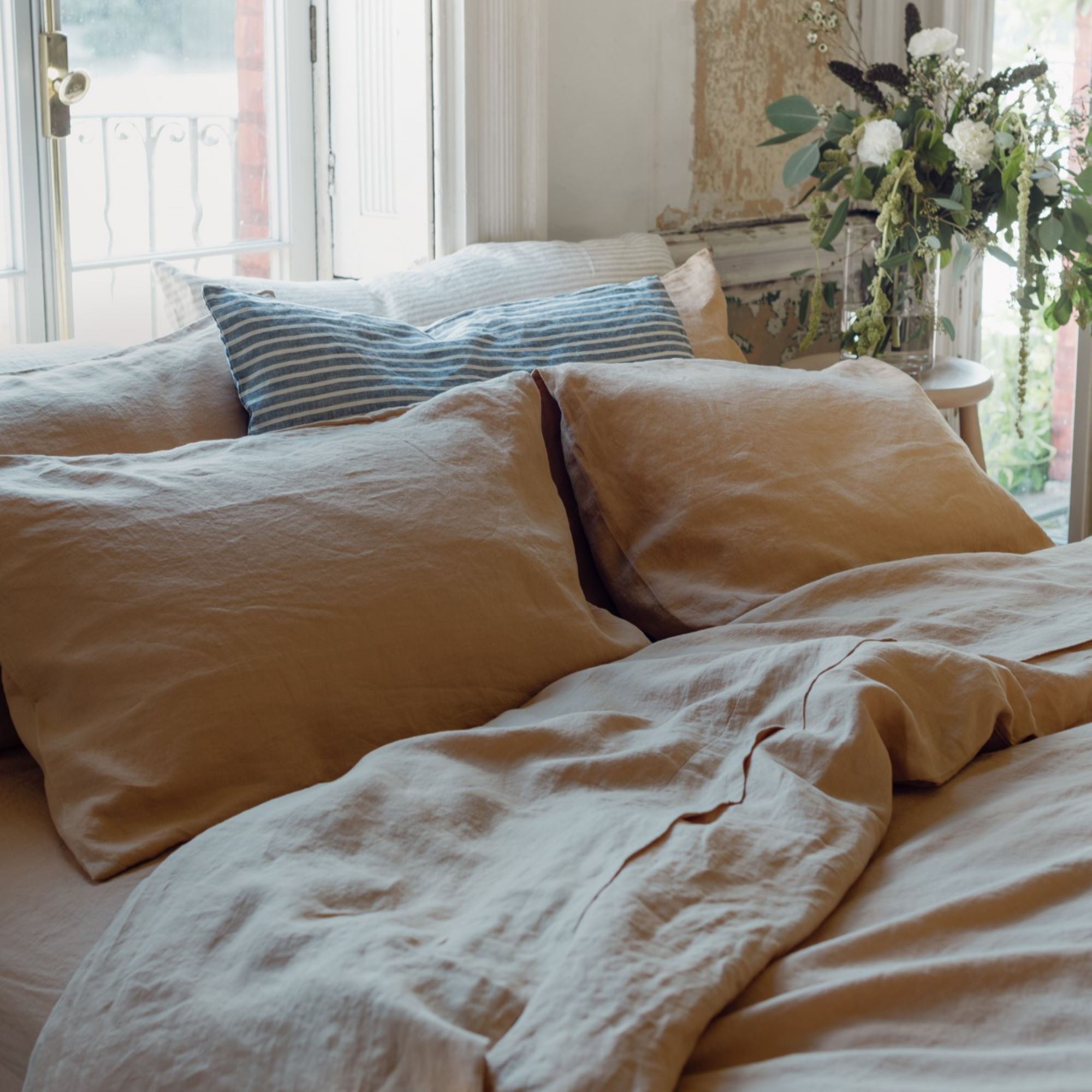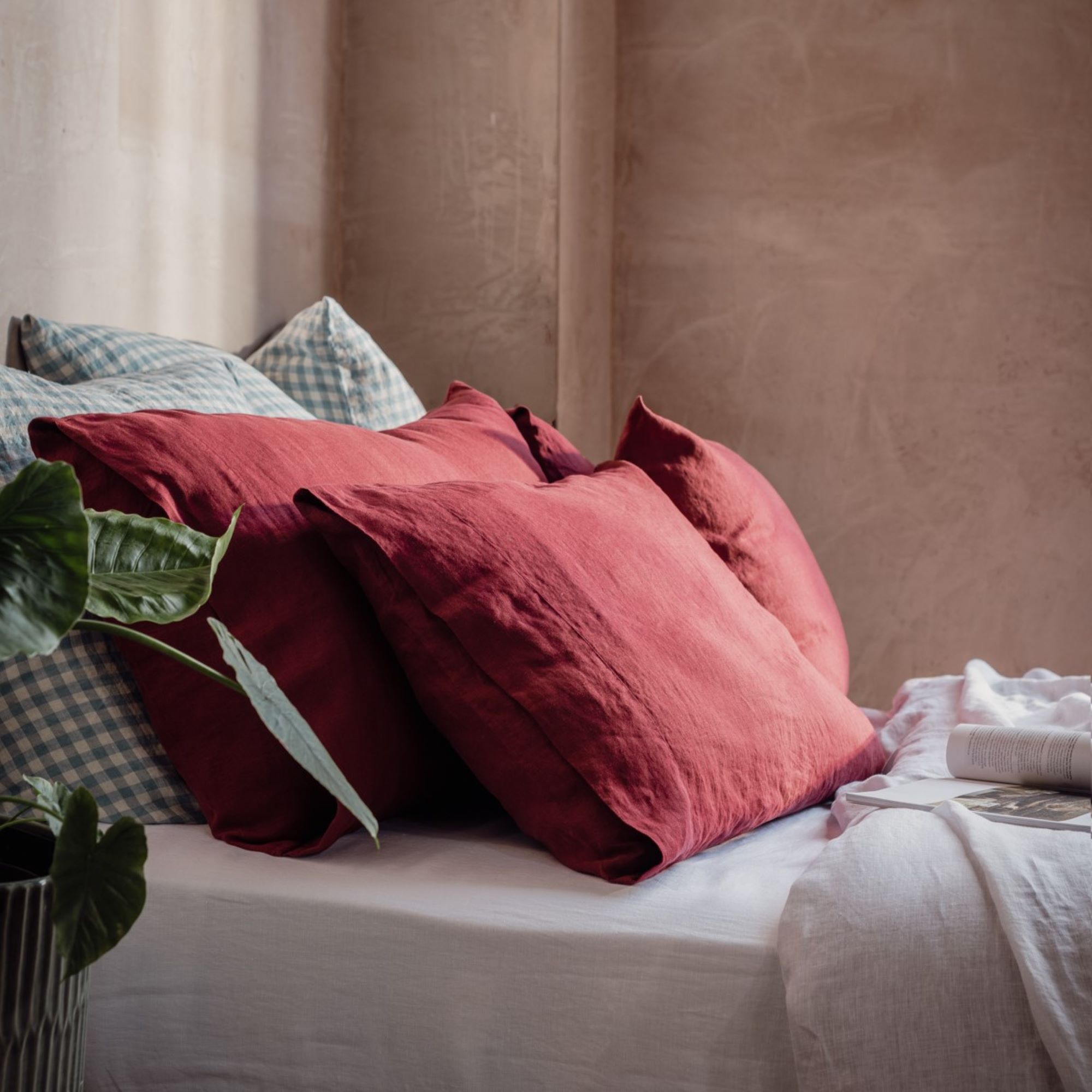How to wash pillows to keep them in tip-top condition – the dos and don'ts according to cleaning experts
A step-by-step guide to how to wash a pillow, including cleaning experts' secrets for the best results


If you’re wondering how to wash a pillow, then we’re here to help. Most of us know how to wash pillowcases, but washing the actual pillow inside can be a little bit trickier.
However, thanks to the help of our trusted cleaning experts we’ve created a simple step-by-step guide to cleaning this bedding essential.
That’s good news if you’ve just invested in one of the best pillows for your bed, as a regular cleaning routine will help to keep your pillow in tip-top condition for longer.
So, without further ado, lets find out how to wash (and dry) a pillow for the best results.
How to wash pillows: a step-by-step guide
1. Strip the bed
First up, you’ll want to remove your pillow cases and any pillow protectors you’re using. This could be a good time to wash the rest of your bedding too, so you might also want to strip your duvet and sheets from the bed ready to put in the washing machine.

2. Check the care label
Next up, check the care label. Depending on what type of filling your pillow contains, it will have different care requirements. So make sure you read the manufacturer care instructions before you begin cleaning.
‘Different types of pillows will require different methods of cleaning,’ explains Fantastic Services' house cleaning expert, Petya Holevich.
Sign up to our newsletter for style inspiration, real homes, project and garden advice and shopping know-how
‘For example, down or feather pillows may need to be dry-cleaned, while synthetic pillows can usually be washed in the washing machine. To determine the best cleaning method, read the label instructions and see if it’s safe to wash yours in the washing machine.’
3. Clean your pillow according to the care instructions
Next, it’s time to get cleaning according to those care instructions. As mentioned, the approach you take will largely depend on the pillow filling, so we’ve broken down the main methods of cleaning for each pillow type below.

Microfibre, hollowfibre, and polyester pillows
'Most synthetic pillows can be washed in the washing machine and dried in the dryer,' says Petya Holevich. 'Run them on a gentle cycle with warm water and mild laundry detergent.'
'I’d recommend machine washing your pillows in pairs so their weight will be balanced. It’s also best to add half the amount of detergent you normally would to a laundry load and run an extra rinse cycle to remove all the soap residue.'
Hayley Thistleton, bedding and sleep expert at Sleepseeker agrees, saying, 'your pillow really needs to be completely free of any soap whatsoever before it's dried, so you may want to try using a wash setting with an extra spin cycle, just to make sure.'
As long as the care instructions give you the go ahead, Petya then recommends we 'tumble dry the pillows on low heat with dryer balls or clean tennis balls to help keep them fluffy.'
'Remember to let them dry completely before using them again,' advises Petya. 'Otherwise, the moisture left on the pillow can result in mould and mildew growth, which can make your sleeping environment unhealthy.'

Feather and down pillows
When it comes to washing feather and down pillows the expert advice is to proceed with caution. It can be done, but any washing should be far less frequent than with a synthetic pillow.
‘Regular washing should be avoided to ensure the filler remains at its best and most efficient,' explains Laura Burnett, buyer at Feather & Black.
Again, check the care label first. 'Most feather and down pillows can be hand-washed or dry-cleaned, but just to be safe, check the label for specific instructions beforehand,' says Petya.
'If you’re hand washing them, use a mild laundry detergent and cold water and rinse them thoroughly. Put them in a tumble dryer on low heat and dry them with dryer balls or clean tennis balls.' Or dry them outdoors if they can't be tumble-dried. Whichever option you use just remember to make sure they're fully dry before they go back on the bed.
'After washing, make sure to fluff your pillows daily to remove any settled dust and maintain their shape,' adds Petya.

Latex and memory foam pillows
It may come as a surprise to you that even the best memory foam pillows can't be washed. Many have removable covers that can be, but the inner memory foam core doesn't react well to water.
'Memory foam pillows shouldn’t be washed in the washing machine or soaked in water because the friction can break the foam,' says Petya.
'Instead, spot-clean any stains with a mild laundry detergent and water. To freshen up the pillow, sprinkle baking soda on the surface and let it sit for a few hours before vacuuming it.'
Any pillow that can't be washed
As you can see, not all pillows are created equal when it comes to washing. So if you have allergies or know you prefer to wash your pillow frequently, this can be an important factor in how to choose the right pillow for you. The best filling for a pillow is a careful balance of comfort and ease of care.
However, if you've chosen a wool-filled pillow or a feather-and-down pillow that says it can't be washed or dry-cleaned, don't worry. There are still ways to freshen it up, at least if you have a sunny day on your side.
'The best way to keep pillows clean, fresh, bacteria and toxin-free and to ensure they last, is to air them in the sunshine on the washing line at least four times a year, preferably at the start of each season', says Rhiannon Johns, Interior Designer and Head of Brand, at Piglet in Bed. 'The sunshine sterilises the wool and the cotton and the warmth of the sun will encourage any moisture trapped within the wool to be wicked away.'
'You can hang them outdoors every now and then on a sunny day monthly to remove any bad smells,' agrees Petya.

FAQs
Can you wash a pillow in the washing machine?
Yes, you can wash a pillow in the washing machine, as long as the care instructions give you the green light to do so. Just make sure to follow the manufacturers advice for the temperature setting and type of machine cycle to use.
How often should you wash pillows
We now know how to wash a pillow, but you might also want to know how often you should be washing a pillow. The expert advice is every 3 to 6 months, although you may want to wash your pillow more often if you suffer from health conditions such as allergies or asthma to remove pollen, dander, dust, or other irritants more regularly.

How do you get the yellow out of pillows?
Yellow stains on pillows are extremely common and normally the result of body oils and sweat. But you can usually remove them by following the care instructions above. Check out our guide to how to get rid of yellow stains on pillows for the full lowdown.
And if you've been wondering if you should buy a pillow protector, then yes, it can be well worth using one to prevent those stains in the first place.
What is the secret to washing pillows?
The secret to succesfully washing pillows is generally as simple as following the care instructions on your pillow's care label. That's because depending on its filling the best type of care can differ.
However, our experts also have two top tips if you're washing your pillows in a washing machine; wash a pair of pillows at the same time to balance your load, and add a tennis ball to the tumble dryer to fluff them back up.
So there we go, everything you need to know to freshen up what goes under your head. But of course, keeping your bed clean and fresh doesn't end there. If you're also wondering how to wash a duvet or how to clean a mattress, our dedicated cleaning guides can help.
How do you go about washing your pillows? Do you have any top tricks up your sleeve? Let us know in the comments!

Amy is Ideal Home’s Sleep Editor and the Ideal Home Certified Expert on Sleep. She's spent the last four years researching and writing about what makes for the best night’s sleep during the day and testing out sleep products to find the best-in-class by night. So far she’s clocked up over 10,000 hours of pillow, duvet, and mattress testing experience.
Our go-to for all things sleep-related, she’s slept on and under bestselling products from Simba, Emma, Hypnos, Tempur, Silentnight, Panda, and many many more.
As a hot sleeper, Amy is always on the lookout for the most breathable bedding, but she also leads a wider team of testers to ensure our product testing encompasses both hot sleepers, cold sleepers, front sleepers, back sleepers, side sleepers, and everything in-between.